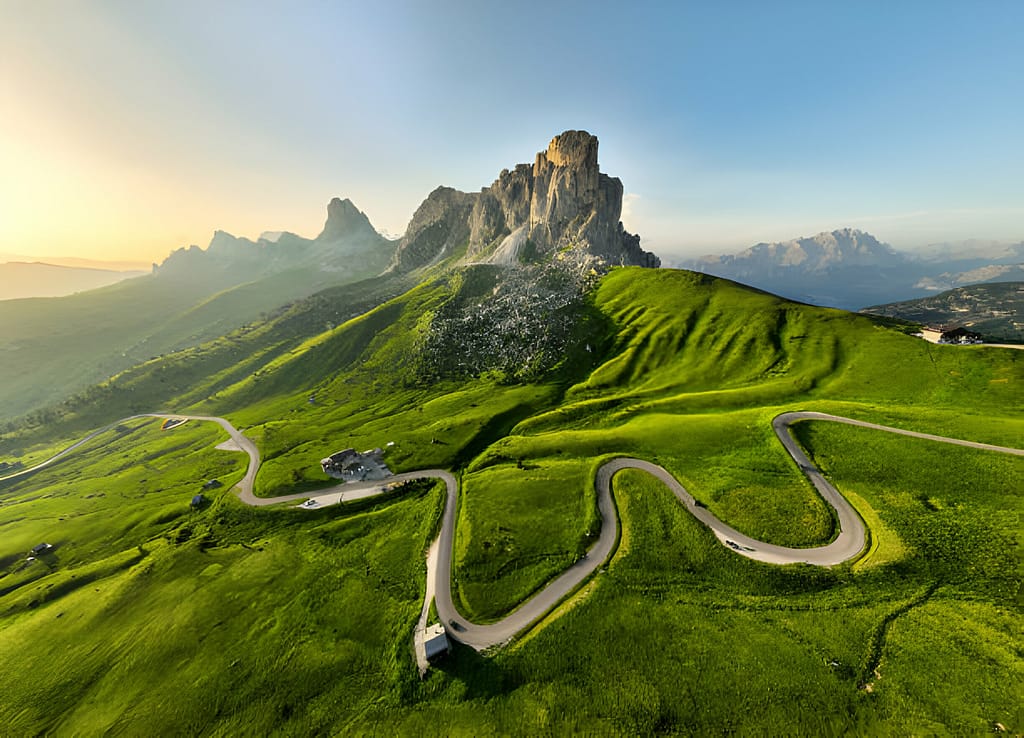In the northeastern part of Italy, lies a mountain range so majestic and awe-inspiring that it has captured the imagination of travelers and adventurers for centuries – the Dolomites. This UNESCO World Heritage Site is renowned for its spectacular limestone peaks, carved by glaciers and fretted by frost, resembling vast battlements, needles, towers, and walls.
Table of Contents
Dolomites Facts

The Dolomites have a rich geological history that dates back millions of years. They started life as coral reefs submerged in shallow seas and were thrust upwards, along with the rest of the Alps, some 65 million years ago. The unique limestone found in the Dolomites, containing small amounts of magnesium, was named “dolomite” in recognition of the French geologist Deodat de Dolomieu’s discovery in the 1780s.
In daylight, the Dolomites’ limestone ranges in color from pale to gray to near-white, but at sunset, the massive rock faces are often bathed in shades of orange and pink. In winter, the bare rock peaks rise dramatically from the snow-covered slopes, creating a breathtaking vista. But with the arrival of spring, a gentler scene is revealed; flower-filled meadows swath the upper slopes, and rock crevices shelter clumps of gem-like alpines such as saxifrage, edelweiss, and pasqueflowers. Lower down, songbirds nest in the woods, and along the valley floors, farmers busy themselves in orchards and pastures.
Dolomites Legacy
The Dolomites are not only a geological marvel but also a cultural and historical treasure. The region’s chequered history is reflected in its many places that retain both Italian and Austrian names. The Dolomites were under Roman rule for centuries, then in the 14th century, they became part of the Habsburg Empire. After World War I, they were returned to Italy.
At the heart of the Dolomites are the Alpe di Siusi, the Cantinacco ranges, and the glacier-topped Marmolada. The Marmolada, crowned with a 330ft (100m) pyramid of rock, is the undisputed Queen of the Dolomites, with her southern face a sheer cliff 2000ft (600m) high. The plateaus of the Alpe di Siusi are a wonderland of brightly colored and fragrant meadows, enclosed by soaring dolomite spires. The massive walls of Catinaccio, which glow red in the rising and setting sun, rise sheer where once the rose garden of Lauren, King of the Dwarfs, is said to have flourished.
South of Marmolada, the bare peaks of Pale de San Martin preside over the tranquil forests of Paneveggio National Park, which once furnished the Venetians with timber for their ships. Isolated from the other ranges but sharing the same dolomite rock are the battlemented peaks of the Brenta to the west. These rugged pinnacles were scaled in the 19th century by British pioneer climbers, among them Francis Fox Tuckett. Today, Brenta’s crags are still among the most challenging in the Dolomites.
The Dolomites are a testament to the Earth’s geological history and the forces that have shaped our planet. Whether you’re exploring their peaks by foot or admiring their majestic beauty from afar, the Dolomites are a place that will leave a lasting impression on anyone fortunate enough to experience them.